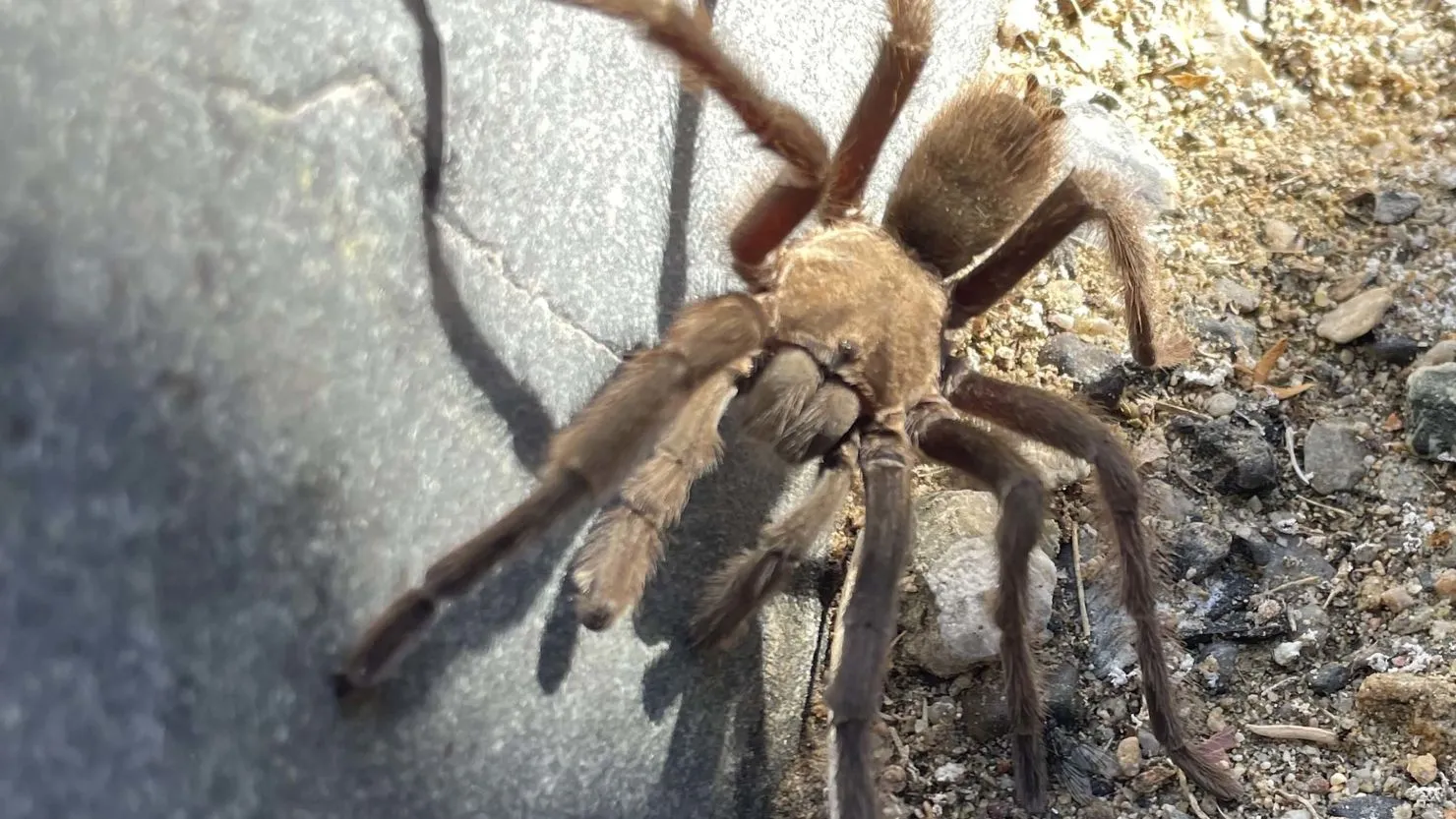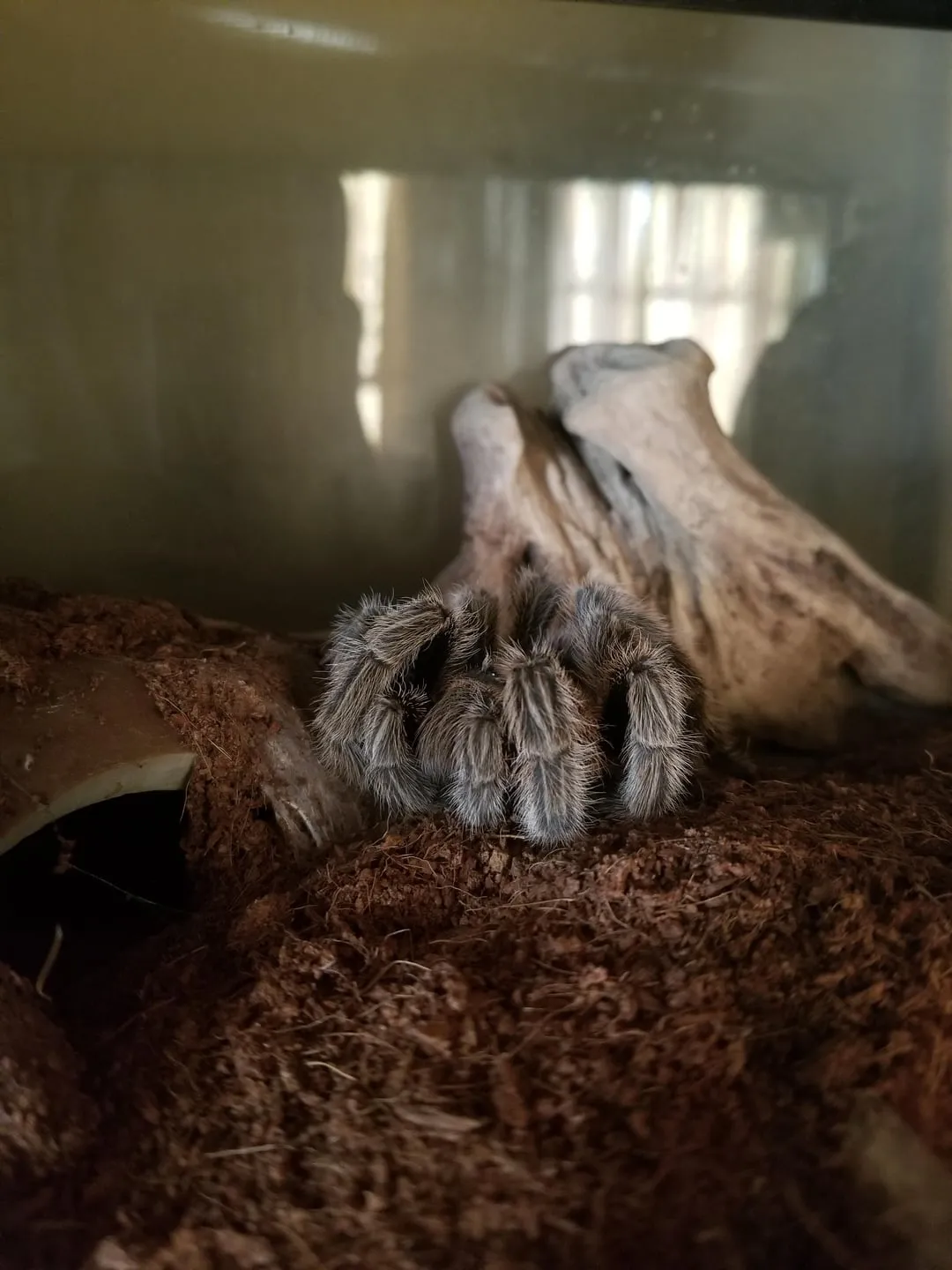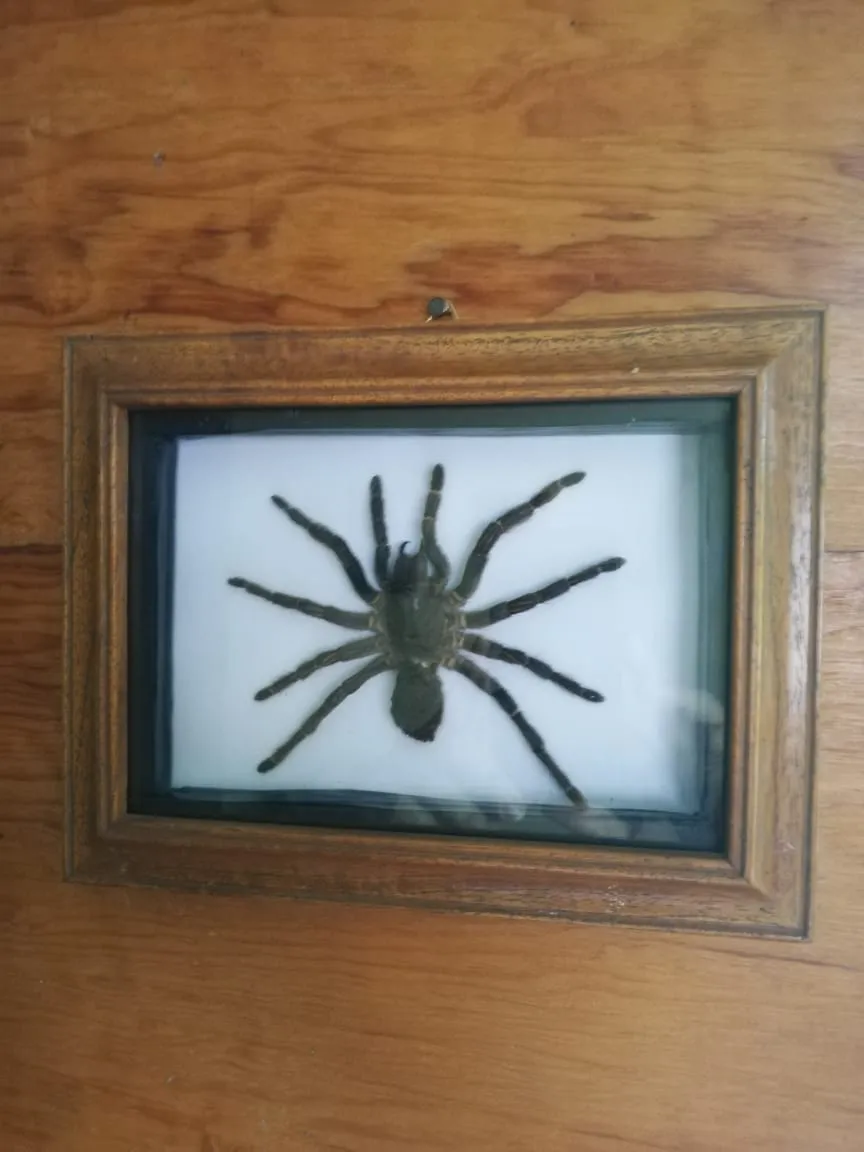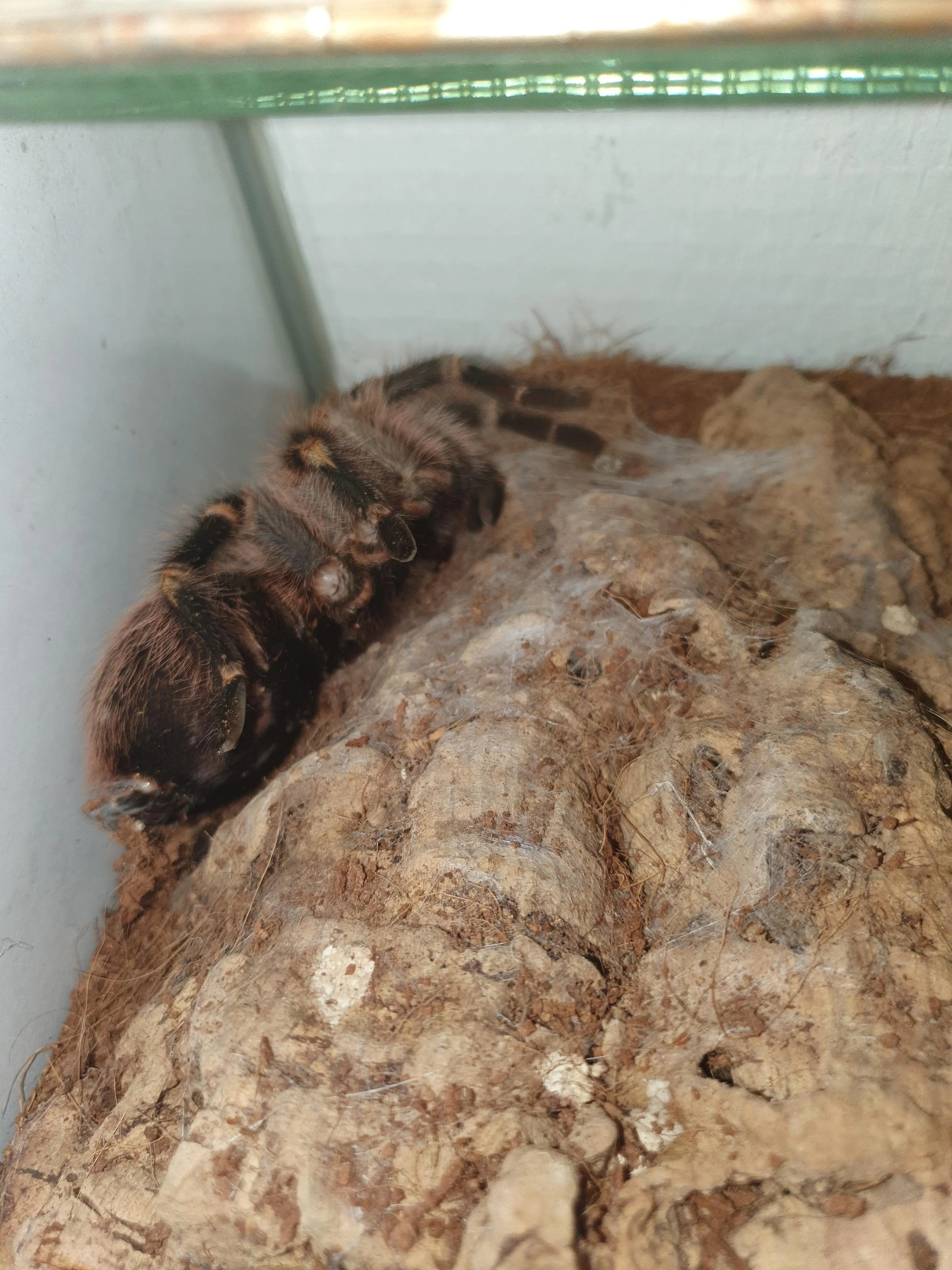Identifying a Dying Tarantula
Owning a tarantula can be a rewarding experience, but as a responsible pet owner, understanding the signs of a dying tarantula is crucial. Tarantulas, like all living creatures, are susceptible to various health issues, and recognizing these issues early can sometimes make a difference. This guide will help you identify the top 5 symptoms that may indicate your tarantula is in distress. Remember, prompt action and veterinary consultation can improve the chances of survival for your beloved pet. Pay close attention to their behavior, appearance, and any changes from their normal routine, as these can provide valuable clues to their health status. Being vigilant and proactive is key to providing the best care for your tarantula.
Loss of Appetite
One of the earliest and most noticeable signs of a tarantula’s declining health is a loss of appetite. Tarantulas are typically voracious eaters, and a sudden refusal to eat can be a cause for concern. If your tarantula, which usually devours crickets or other insects, suddenly stops eating, it’s a red flag. This can be due to various underlying issues, including illness, parasites, or environmental stressors. Observing their feeding habits is essential for gauging their health. Healthy tarantulas should readily accept food, so any prolonged refusal to eat, especially if accompanied by other symptoms, warrants a closer examination and possibly veterinary consultation. The longer a tarantula goes without food, the weaker it becomes, increasing the risk of further complications.
Details and Explanation

When a tarantula loses its appetite, it may ignore or actively avoid food, even when offered its favorite meals. The spider might not show any interest in live prey, or if it does approach, it may not attempt to capture or eat it. There are several reasons for this behavior. It could be due to a bacterial or fungal infection, or it could be a symptom of internal organ failure. Alternatively, the tarantula might be feeling unwell, leading to a general lack of interest in its surroundings, including food. Environmental factors, like incorrect temperatures or humidity levels, can also affect their appetite. A sudden change in the tarantula’s eating habits needs immediate attention, as it could be the first indicator that something serious is wrong. Observe for any other symptoms and consult a veterinarian specializing in exotic pets.
Lethargy and Lack of Movement
Another significant symptom of a dying tarantula is lethargy and a noticeable decrease in movement. Healthy tarantulas are typically active, especially during feeding or exploration of their enclosure. A tarantula that is unwell may become sluggish, spending more time motionless in a specific spot. This behavior is a clear indicator that the tarantula is not feeling well and could be in pain or experiencing internal problems. Pay close attention to how much the tarantula moves daily and any changes in its activity levels. A lethargic tarantula often displays a lack of response to stimuli, such as gentle prodding or the introduction of live prey. The spider might barely react, further suggesting its weakened state. If your tarantula is showing this behavior, it’s important to take immediate action to determine the cause and seek professional help.
Details and Explanation
Lethargy in tarantulas can manifest as a persistent lack of movement, a reluctance to climb or explore, and a general stillness that is uncharacteristic of a healthy spider. The tarantula might be seen resting in a position for extended periods, often with its legs tucked in or in an unnatural posture. The tarantula’s response to external stimuli will be slow or nonexistent. The spider may have difficulty moving its legs or even standing. This could be due to a variety of underlying issues, including dehydration, infection, or neurological problems. The lethargy can also be a sign of molting problems, where the tarantula is struggling to shed its exoskeleton. Observing these changes is crucial, and consulting a veterinarian immediately is advised to rule out any serious health issues.
Abnormal Posture

Changes in posture can be a critical indicator of a tarantula’s health status. Healthy tarantulas typically hold their legs in a natural position, allowing them to move freely and maintain balance. A dying tarantula might exhibit unusual postures, which indicate internal problems or discomfort. Watch out for specific postures that deviate from the norm. These changes in posture can range from a tarantula lying on its back, an unnatural leg position, or difficulty maintaining balance. The abnormal postures can be a sign of neurological issues, physical injuries, or systemic illnesses. It is very important to monitor your tarantula’s posture regularly and take note of any changes. This helps in early detection and can guide you to take suitable action to take care of your pet. Always consult a veterinarian or experienced arachnid specialist to get a correct diagnosis and advice.
Details and Explanation
Abnormal postures include the tarantula’s inability to right itself if it falls or rolls over, or the legs being extended or curled in an unusual way. Some tarantulas might struggle to stand properly, appearing unsteady or shaky. Others may be seen in a hunched position. These changes are signs of weakness, paralysis, or other medical conditions. Other abnormal postures include leg spasms, which are involuntary muscle contractions. If you notice these, it’s essential to assess the tarantula’s environment and general health. Poor posture can result from a wide range of issues. It could be due to a metabolic disorder, poisoning, or physical injury. The abnormal posture may also be a sign of a severe systemic illness. Identifying the underlying cause is critical. This often requires professional veterinary assistance. Early detection of postural changes can lead to timely intervention and potentially save your tarantula’s life.
Changes in Coloration
Changes in a tarantula’s coloration can signify health problems. Healthy tarantulas usually display vibrant and consistent colors, depending on their species. Any sudden or gradual alteration in their coloration can be a sign of distress. It is very important to become familiar with your tarantula’s normal appearance to spot any deviations from its usual colors. Changes to look out for include dulling of colors, the appearance of unusual spots or patches, or a general paleness. These color changes can be a sign of infections, parasites, or other health problems. It could be due to the spider’s inability to properly regulate its body functions. In other cases, the discoloration is linked to a poor diet. This could also be an indication of environmental stress. Early detection can make the difference in providing timely and effective care for your tarantula. Always consult a veterinarian specializing in exotic pets for a correct diagnosis.
Details and Explanation

The color changes to look out for include a fading of the usual vibrant hues. There might be a general paleness or loss of the spider’s characteristic patterns. Sometimes, you might notice discolored spots, patches, or blotches on the tarantula’s body. These could be a sign of infection, parasites, or underlying health conditions. In some instances, the color changes could indicate dehydration or molting problems. The spider might also be experiencing organ failure. Changes in coloration often accompany other symptoms like lethargy and appetite loss, giving a comprehensive picture of the tarantula’s health. If you note changes in your tarantula’s color, isolate the spider immediately. This will help to prevent the spread of potential infections to other pets. Then, seek professional veterinary advice as soon as possible.
Failure to Molt
Molting is a crucial process in a tarantula’s life cycle, where the spider sheds its exoskeleton to grow. If a tarantula struggles to molt or fails to do so, it can be a sign of serious health issues. A healthy tarantula should molt regularly, with the frequency depending on its age and species. Molting problems can include the tarantula getting stuck in its old exoskeleton, which can lead to dehydration or injuries. It may also cause constriction of the limbs, preventing normal movement. Failure to molt can be the result of a variety of factors, including improper humidity levels, nutritional deficiencies, or underlying illnesses. These factors can prevent a tarantula from shedding its exoskeleton correctly. The process is not only critical for growth, but also for eliminating parasites and renewing damaged body parts. Careful attention to environmental conditions and providing proper care can help your tarantula molt successfully. If you notice your tarantula is struggling to molt, it is recommended to consult with a veterinarian or a specialist in exotic pets. They can determine the cause of the problem and advise on the best course of action to help your tarantula.
Details and Explanation
When a tarantula is struggling to molt, you might notice several signs. The most obvious sign is the tarantula’s inability to fully shed its old exoskeleton. Parts of the old exoskeleton can remain attached, especially around the legs, chelicerae, or abdomen. This can constrict the tarantula’s movement, causing it to become lethargic. It can also prevent the spider from eating or drinking properly. Other signs include the tarantula spending an unusually long time trying to molt, or the spider showing signs of distress during the molting process. Improper humidity is often a cause of molting problems. In too-dry conditions, the old exoskeleton becomes rigid, which makes it difficult for the spider to shed it. Nutritional deficiencies and underlying illnesses can also play a role. If you suspect a molting problem, make sure the tarantula’s enclosure has the right humidity. Seek advice from a qualified veterinarian or arachnid expert to take care of your tarantula.
Providing Comfort and Care

If you suspect your tarantula is dying, your primary goal should be to provide comfort and minimize its suffering. Keep the tarantula’s enclosure clean and maintain the correct temperature and humidity levels. This will help in preventing additional stress and complications. Avoid handling the tarantula unless absolutely necessary, as this can cause further stress. Provide easy access to water, which is essential for hydration. If the tarantula is still eating, offer it small portions of its usual food. Never attempt to self-medicate your tarantula. Contact a veterinarian specializing in exotic pets. They can provide accurate diagnosis and offer appropriate medical treatment. With prompt and appropriate care, you may be able to provide a better quality of life for your tarantula. Even if the prognosis is not positive, compassionate care is essential.
Maintaining Proper Environment
Maintaining the proper environment is critical for supporting your tarantula’s health, especially when it is unwell. Ensure that the enclosure is kept clean and free of any potential hazards. Regularly remove any uneaten food or waste. This minimizes the risk of infections. Make sure that the temperature and humidity levels in the enclosure are correct for the tarantula’s specific species. Use a reliable thermometer and hygrometer to monitor these conditions. Providing the correct environment can significantly affect your tarantula’s well-being. Improper conditions can worsen the spider’s health. If your tarantula is not eating or is showing other signs of illness, it might be helpful to adjust the environment slightly to encourage it to eat. However, always keep the environment safe. Keep the enclosure away from direct sunlight and drafts. The enclosure should be of the proper size and type for your species.
Details and Explanation
To maintain the proper environment, first, know your tarantula species’ specific needs. This includes temperature, humidity, and the type of substrate. Most tarantulas thrive in temperatures between 75°F and 85°F. You can use a heat mat or ceramic heat emitter to maintain the proper temperature. The ideal humidity level will depend on the tarantula’s species. Use a hygrometer to monitor humidity levels. Mist the enclosure with distilled water as needed to maintain the correct humidity. You also need to choose the right substrate. Use a substrate like coconut fiber or peat moss to help maintain humidity. Make sure the substrate is not toxic and is safe. Provide a hide, such as a cork bark or a half-log. This allows the tarantula to feel safe and secure. This makes the tarantula less stressed. Regular cleaning and maintenance, along with the correct environment, will help to improve your tarantula’s health.
Consulting a Veterinarian

If you notice any of the symptoms mentioned, contacting a veterinarian experienced with exotic pets is crucial. A veterinarian will be able to perform a thorough examination and provide an accurate diagnosis. They may suggest blood tests, fecal examinations, or other diagnostic procedures to determine the cause of the problem. Do not attempt to treat your tarantula yourself. Always follow the veterinarian’s instructions and prescribed medication. Early and accurate diagnosis can make the difference in your tarantula’s chances of recovery. A qualified veterinarian has the expertise and resources to provide the best care. Even if the situation is not treatable, the veterinarian can provide guidance on managing the tarantula’s comfort. They also help reduce the suffering and ensure that the tarantula’s needs are met.
Details and Explanation
When seeking veterinary care, find a veterinarian with experience in treating exotic animals, especially arachnids. Not all vets are familiar with the specific health needs of tarantulas. When you visit the vet, provide a detailed history of the tarantula’s symptoms and behavior. Describe the enclosure environment, diet, and any changes. The vet may need to perform a physical exam and run tests. The tests will depend on the suspected cause of the illness. This could include a fecal exam, a blood test, or an analysis of the tarantula’s exoskeleton. The veterinarian may prescribe medication to treat infections, parasitic infestations, or other conditions. Follow their instructions carefully, including dosage and duration. In some cases, the veterinarian might advise you to make changes to your tarantula’s enclosure or diet. This will help in improving the tarantula’s health. Remember, prompt veterinary care and adherence to the vet’s recommendations will give your tarantula the best chance of recovery.
Understanding the Tarantula Life Cycle
Understanding a tarantula’s life cycle is essential for providing proper care and recognizing signs of illness. Tarantulas go through different stages of development, including the juvenile and adult phases. Knowing what to expect during each stage can help you recognize changes in your tarantula’s behavior and health. Tarantulas molt throughout their lives to grow. Molting is a vital process, but it can also be a stressful time. Familiarize yourself with the molting process. If your tarantula is exhibiting any unusual symptoms or behaviors, seek professional help. This is especially critical if it is struggling to molt or is showing other signs of distress. Regular observation of your tarantula and its habitat will help to identify potential problems early. This allows for prompt action and possibly improve its survival chances. Remember, understanding the life cycle will make you more proactive in providing optimal care.
